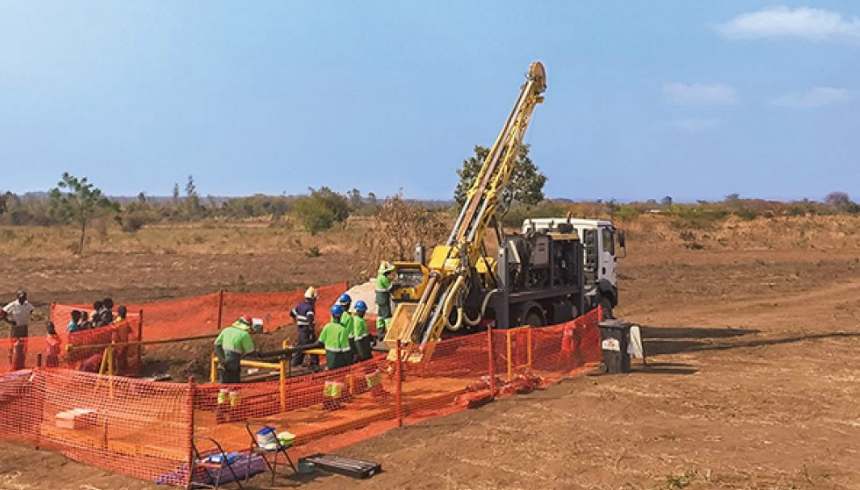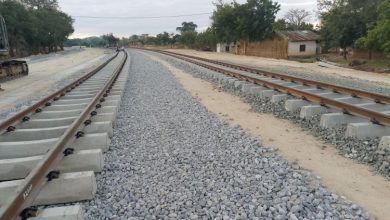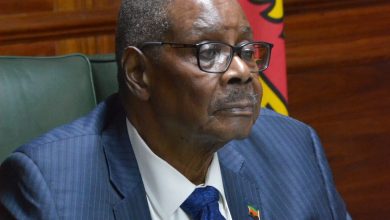Is mining on course to surpass tobacco?
Malawi’s economy has been dependent on tobacco, which accounts for around 50 percent share of exports, providing hundreds of thousands of jobs.
However, this dominance might come to an end in the foreseeable future with the emergence of mining.

The recent signing of mining development agreement by government and two companies; Lotus Resources and Lancaster Exploration have put minerals on course to supplement foreign exchange earnings from tobacco.
The past three years have seen tobacco strengthening its feat as the major export earner, increasing its share of exports from 49 percent to 66 percent, according to Reserve Bank of Malawi data.
National Planning Commission (NPC) commissioner Phillip Madinga said recently that if mining projects start operating, the projections give him confidence that the economy can grow by up to 10 percent.
“If the country managed to grow by seven to eight percent just with Kayelekera Uranium Mine, what if we have several mines operating? I believe it is possible to grow by 10 percent,” he said.
The NPC thinks for the country to achieve the 2030 developmental aspirations of becoming a lower middle income economy there must be a growth rate of over 10 percent.
However, with an average of 1.2 percent growth rate since the Malawi 2063’s First 10- Year Implementation Plan (MIP- 1), this dream appears to be more unrealistic.
Malawi is endowed with different types of high value natural resources but there is still no significant mining venture to support economic growth as the sector only contributes around 1 percent.
Government thinks if the mineral resources were extracted to full scale this contribution could grow to 15 to 20 percent, targeting that feat by 2030.
Geologist and former minister of Energy Grain Malunga thinks the pace at which the country is taking to develop mining sector is too slow and delays the realisation of this dream.
Minister of Mining Monica Chang’anamuno said in a recent interview that there is a lot that had been happening to clear the ground before mining ventures kick off, citing regulatory environment that has been put in place.
“We recently gazetted the new law that establishes mining regulatory authority which will be doing all the licensing and the board will be put in place very soon,” said the minister, adding that the State-owned mining company has also been registered to spearhead mining investments in the country.
Nevertheless, there is renewed hope, though, as government has signed two mining development agreements, adding up to four and they include the Kayelekera Uranium Mine by Lotus Resources, Kanyika Niobium Mine by Globe Metals in Mzimba, Kangankunde Rare Earth project by Lindian Resources in Balaka and Songwe Hill Rare Earth Project by Lancaster Exploration in Phalombe.
The four projects have a combined investment value of $641 million (about K1.1 trillion) which will add to the gross domestic product (GDP) when finalised, representing about 4.7 percent of the $13.6 billion (about K24 trillion) GDP based on World Bank economic estimates.
The Kangankunde feasibility study indicates that the $40 million (about K70 billion) mine will generate $81 million (about K141 billion) in the first five years. It is expected to start operating towards the end of 2025.
The Kayelekera Uranium Mine, with initial capital of $88 million (about K154 billion), has revenue projection of $95 million (about K166 billion) in the first year before increasing to $278 million (about K486 billion) a year later while Songwe Rare Earth requires $277 million capital and revenue is projected at $215 million annually.
Globe Metals rounds off the mine life revenue of $5.4 billion, which represents an average of $236 million for the 23- year period.
With peak productions expected within the next five years, this could make mining generating around $810 million annually while tobacco exports, which recovered in 2023, generated $449.2 million, according to UN Comtrade.
Globe Metals, which was the first to get a mining licence after about a decade of negotiations, is supposed to finish construction of the mine within 18 months after being licensed, but according to the company’s chairperson, Neville Huxham, the idea of refining the mineral right here in Malawi means this needs a waiver to ensure finalisation of the refinery before mining begins.
Another big mining project is also being prepared in Lilongwe at Kasiya where Sovereign Metals intends to develop the largest rutile mine in the world at a site that has the 18 million metric tonnes of rutile and 23.4 million MT of graphite that will generate over $400 million.
The mine with lowest globe cost production of both minerals, requires $597 million for development.
With these projections, mining is on course to become the country’s largest export industry in the medium term, and only then will the long chase of economic diversification dream come to reality.





